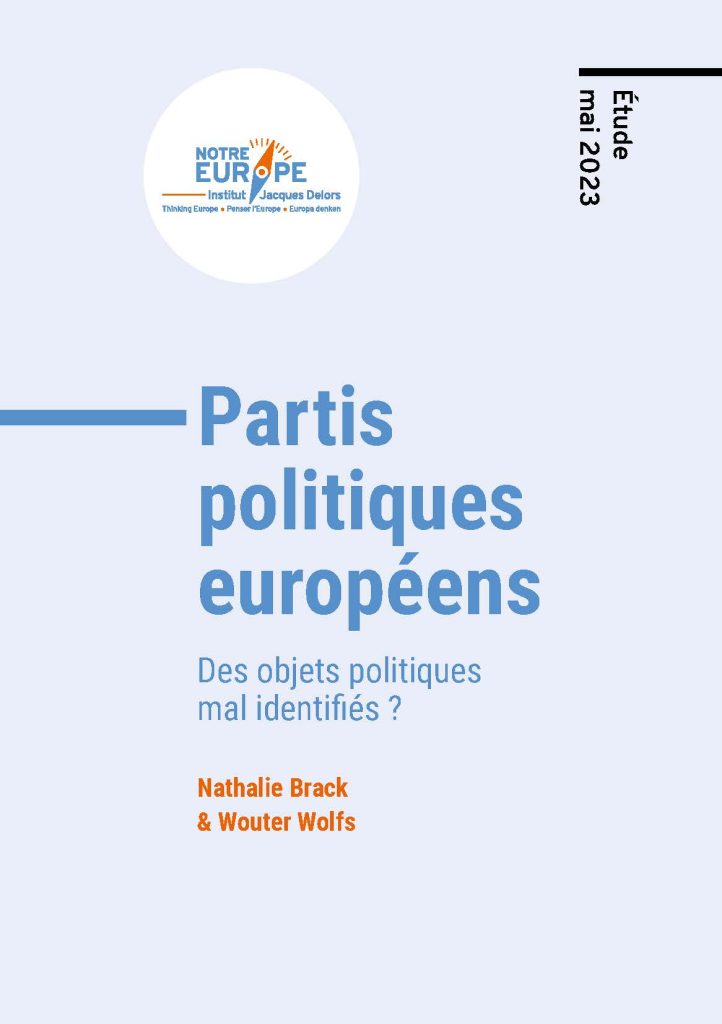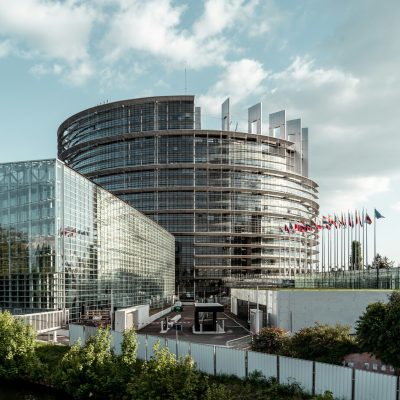Partis politiques européens
Des objets politiques mal identifiés ?

Citer cet article
Brack N. & Wolfs W. 2023. “Partis politiques européens« , Étude, OPPE of the Jacques Delors Institute, mai.
Résumé
Les partis politiques jouent un rôle central dans les démocraties libérales contemporaines : ce sont des courroies de transmission essentielles entre les citoyens et la prise de décision politique et de sélection des candidats. Vu leur rôle au niveau national, il n’est pas étonnant que l’on se soit tourné vers les partis politiques comme solution au déficit démocratique dont souffre l’Union européenne (UE).
Cette étude vise à étudier les différentes facettes des partis politiques européens, les défis auxquels ils font face ainsi que les perspectives quant au rôle des partis politiques européens pour la démocratie supranationale. Elle est structurée en quatre parties.
Une première partie retracera brièvement l’évolution des partis politiques européens. Elle montre que la création d’un cadre règlementaire a favorisé l’émergence des Europartis. Après une période de rapide émergence et de grande volatilité, leur nombre semble toutefois se stabiliser dans la période récente, avec 10 partis politiques européens reconnus par l’Autorité pour les partis politiques européens et les fondations politiques européennes (APPF).
Une seconde partie analyse le financement des partis européens. Introduit en 2003, le financement direct des partis politiques a été modifié en 2007, 2014, 2018, 2019 et est actuellement en cours de modification. Nous montrons que si les partis politiques européens ont pu compter sur un niveau croissant de ressources financières, notamment en raison de l’augmentation du financement public, l’utilisation de ces subventions est également soumise à certaines limites. La plus importante est que les fonds européens ne peuvent pas être utilisés pour financer directement ou indirectement des partis politiques nationaux ou des candidats, ni pour des campagnes électorales ou référendaires nationales. Bien que, loin d’être leur seul obstacle, les règles entourant l’usage des fonds européens sont l’une des contraintes limitant l’implication et la visibilité des partis politiques européens dans la vie politique.
Une troisième partie aborde la question du rôle et de la nature des Europartis. Elle se concentre en particulier sur trois fonctions essentielles des partis en démocratie : la fonction d’articulation et d’agrégation des intérêts, la fonction de liens et la fonction d’influence sur le processus décisionnel. Nous y analysons la faible visibilité des Europartis lors des élections ; l’apport de la procédure des Spitzenkandidaten ; la structure et les règles d’adhésion aux partis politiques européens et enfin, la question de l’influence des Europartis via le Parlement, le Conseil et le Conseil européen.
La conclusion revient sur les principales contraintes pesant sur les partis politiques européens et discute des perspectives pour les prochaines élections européennes de 2024 et 2029. En particulier, au-delà des avancées concernant les listes transnationales et les Spitzekandidaten, la visibilité des Europartis pourrait être facilement et rapidement accrue via l’inclusion de leur logo dans le matériel de campagne de leurs partis membres.





